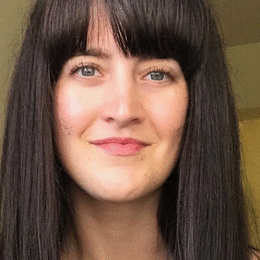How To Improve Your Technical Writing: A Step-by-Step Guide

Writing with AI - Learn more


Technical writing is very different from other writing rhetoric. Every writing style has its own demands and requires its own skillset.
In today’s business world, technical writing is highly demanded, but there isn’t as large of a pool of skilled technical writers as you may think, especially when it comes to technical reports!
Technical reports are documents used to communicate technical information such as the progress or results of technical research:
Here are some tips to improve your technical report writing skills and create a successful report:
Some technical reports are used to guide important and often complicated processes. If a step or detail is omitted, you’re setting your reader up for frustration or failure.
A plastic-producing company client reached out to us after they lost their largest customer when a polymer the company produced broke down at a particular temperature. This shouldn't have happened because testing had been conducted on the polymer following a new and supposedly rigorous testing protocol (the testing SOP).
When we deconstructed the information path backward from the customer report that specified the polymer performance → to testing reports → to the testing SOP, we noticed some ambiguity in the SOP wording.
Our technical writing course is available for individuals and groups.
Download the Course OutlineThe SOP didn't overtly state the acceptable temperature breakdown point for this type of polymer. Instead, it simply stated, " test for acceptable heat tolerance." That vagueness later caused major problems. Each testing engineer had a different understanding of what “acceptable heat tolerance” was, so underperforming products were produced and shipped.
Ugh! A "small" omission in a process document eventually cost the company its largest customer and opportunity. The fallout in publicity and liability was far worse than any delay and resolution would have been. The technical writer who wrote the SOP lost his job. Nothing good happened by not writing with specificity.
I could tell you story after story I've heard in training sessions and client meetings about the major implications of errors or lack of clarity in technical documents. Nothing — let me repeat — nothing, matters more in technical documentation than accuracy and specificity. A formal technical writing process should guide the report to ensure it's accurate and meets the needs of the reader.
So, you’ve ensured that all the key details and necessary information are included in your technical report. Excellent! Now, you’re ready to refine your document structure.
The framework for your technical document is almost as important as the information itself; you can have tons of great detail, clear examples, and illustrative photos, pie charts, or diagrams, but without coherent organization and sequencing, none of that great information will be helpful to your reader.
There are two important steps to follow as you create this document framework:
Break up your document into logical sections! You need coherent groupings, organized by topic, to best guide your reader through your document content.
Reading a huge, dense block of text is very tiring for readers and requires a great deal of concentration. In fact, studies have shown that, after about seven lines of text, our brains naturally skip to the end of a paragraph!
Use paragraph breaks to separate out your category groups. This creates white space in your document so that it breathes. Your reader will be much more likely to read and understand everything in your document fully.
It's critical that you put each of your topics or sections into a logical order. Your document purpose should always guide this process.
Technical documents like reports require that you provide a high-level overview at the beginning before diving into all the details. Here are the four tiers you should follow in a technical business report (sequence will vary in other types of technical documents, such as procedures or user documents):
What’s important is that you consider your readers’ topic understanding, and guide them in a clear way. Every sequencing decision should be intentional; never leave your technical document details in a stream-of-consciousness format.
Remember, a clear structure facilitates the absorption of information. If you want your reader to be able to efficiently follow your document instructions or understand all its important information, you need to create logical topic categories and organize them thoughtfully.
Technical writers sometimes get a bad rap with technical communications. Have you ever been excited to read the manual for a new appliance or electronic device?
I imagine the answer is no, even if you’re excited to get started with your new toy. This is because most technical documents are written with extremely dense and complex language. And it doesn’t have to be this way!
When approaching technical documentation, remember that the subject matter is already complicated. Less is more with your word choice and sentence structures. Aim to use universally understandable language to illustrate and illuminate your complex topic.
Also, remember that editing is the onus of the writer. Oftentimes, fewer words lead to greater document clarity and impact. French philosopher Blaise Pascal famously wrote: “I would have written a shorter letter, but I did not have the time.”
Think of your busy readers. We are all overloaded. Save them time by delivering your information with clear and concise language. Clarity of writing is essential.
Good technical report writing is a skill that takes practice, but can 100% be honed with time and attention. These tips will help get you started. Here are a few more tips:
Another piece of advice? If you have any other questions, we’re here to help you create a successful report. View our technical writing courses here.
Our technical writing courses are available for individuals and groups.
Download the Course Outline